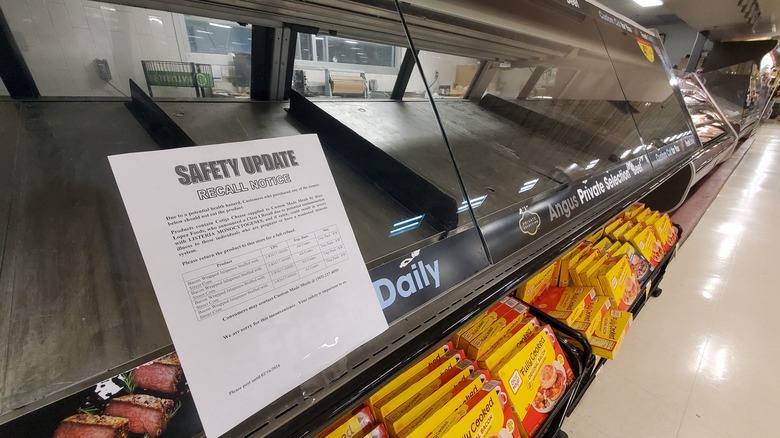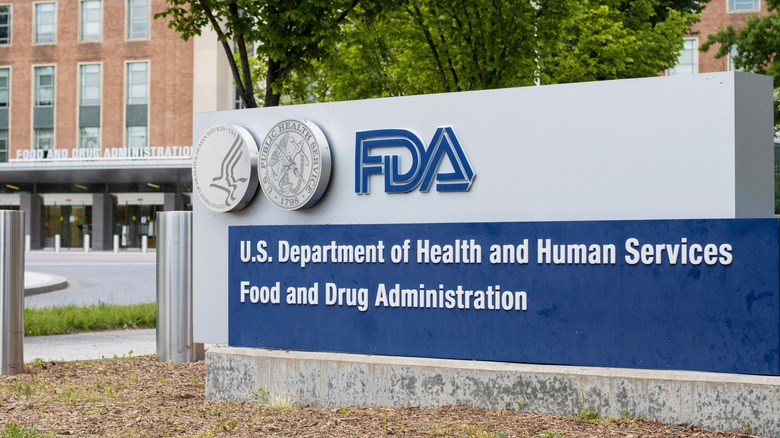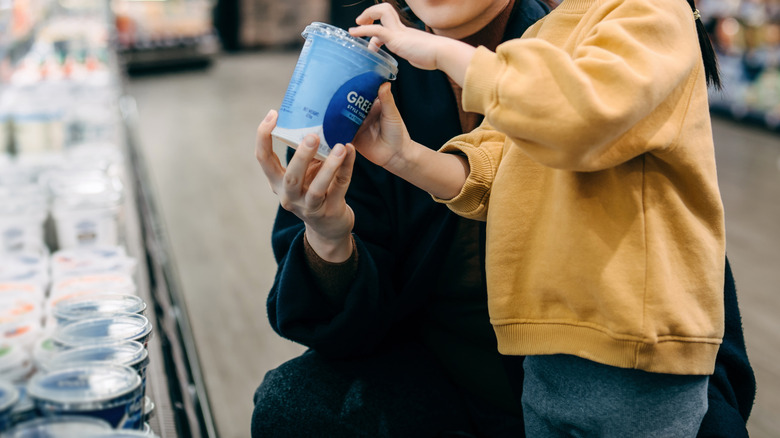Here's What Each Food Recall Class Means For Your Safety
If you've been concerned about the recent recall of Palmer Candy products and other major food recalls, you may have stumbled upon some confusing terminology. In May of 2024, the Food & Drug Administration issued a recall for a number of Palmer products that were sold at Walmart, HyVee, Target, Dollar General, and other retailers in 17 states for potential contamination with Salmonella and risk of infection. The potential contamination came from a liquid coating supplier that had provided a product for the white coating on some of Palmer's confections.
The products potentially contaminated include various snack mixes, coated pretzels, and cookies. The full list of products can be found on the FDA website. After this alert, Palmer suspended production while the company and FDA investigated the contamination. However on August 6, months after the initial recall in May, the FDA updated the recall to class I, the organization's highest level of alert.
If you've never heard of FDA recall classes before, you're not alone. A class is not always issued for each recall at first because it takes time to learn how serious the issue is. The FDA also does not usually issue public warnings for risk classes below I, as they represent a lower level of potential harm. Beyond class I, the FDA also issues class II and III recall levels for food and medical products. But what do those levels actually mean? And how worried should you be when you see them?
What is an FDA class I recall?
Class I is the highest level of danger for a recall, and also the one that you're most likely to see as they usually result in public announcements warning consumers. According to the FDA, a class I recall is defined as "a situation in which there is a reasonable probability that the use of or exposure to a violative product will cause serious adverse health consequences or death."
Salmonella, like in the current Palmer Candy recall, is one of the more common causes of class I recalls because it can cause serious gastrointestinal illness and fever and even death in vulnerable populations like children and the elderly. Other common threats that cause class I recalls include E. Coli on ground beef and leafy greens, Clostridium botulinum, also known as Botulism, in canned food, and unlisted allergens like peanuts that could cause life-threatening reactions.
Class I recalls can also trigger the FDA's authority to call for mandatory recalls. Another term the FDA uses is SAHCODHA, which stands for "serious adverse health consequences or death to humans or animals," and is used to determine if a mandatory recall is needed. This means that contaminated pet food can also fall under class I, as can products that are not contaminated but represent a choking risk to infants and children. Because these recalls present the most risk, the FDA will issue public statements, which should be taken very seriously.
What is an FDA class II recall?
Class II is the middle level of warning for the FDA and still represents some level of risk to consumers. The FDA classifies a recall as class II when using or being exposed to a product can cause medical conditions that are temporary or reversible, and where more serious outcomes are unlikely. Some cases that fall into class II include norovirus in shellfish and seafood, more serious levels of mold or yeast contamination, and the unconfirmed risk of botulism.
FDA class II recalls see variation in how they are publicized, and not all are serious enough to rise to the level of a public warning. In these cases, the FDA is working from a preventative standpoint to stop a situation from potentially getting worse. The administration will work with the affected company to form a plan to get the product off of shelves.
Some class II recalls do rise to the level of public warnings because they represent some threat to health, and these are usually related to unlabeled ingredients that could trigger common food allergies. For class II, these would most likely be lower levels of allergens like wheat that are not life threatening but could still harm people. According to a report by Sedgwick, allergens represented the most common cause of food recalls by far, making up almost half of all recalls in recent years.
What is an FDA class III recall?
As the lowest level of warning, an FDA class III recall represents a product that does not pose serious harm to the public. In this case, exposure to a product is not likely to cause any illness but does violate some kind of FDA regulation. Very similar to class III recalls are actions called market withdrawals, where the infraction causing the recall is usually something minor that is corrected by companies before the product is returned to shelves.
A common cause of class III recalls is incorrect labeling that does not risk anyone's health. This could be an incorrect weight listed on packaging or non-organic food being labeled organic. Slightly more alarming class III recalls can include food that was placed in unsanitary conditions and is decomposing or non-bread foods that contain less serious levels of yeast or mold contamination.
Because class III recalls don't rise to the level of public alerts, you're unlikely to hear about them, but they still help the FDA to be proactive and keep your food safe. At the end of the day, even with all of the different classes and definitions, the level of risk for your food is subjective, so you shouldn't judge a recall on its class level alone. The most important information is listed on the FDA's public list of recall announcements, which contains specific guides on the level of threat and the actions that should be taken.



